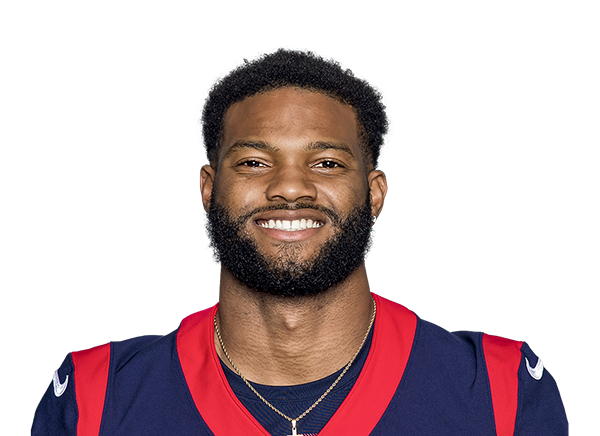Dynasty QB Deep Dive: Setting the Bar and Benchmarks

Editor’s Note: This two-part series is by a new Member Corner writer of ours, George Kritikos. We welcome George to Team DLF and look forward to seeing more of his work in the future.
When thinking about what to write about first, I tried to drift towards the combination of the known and the unknown. I have been in a dynasty league for the last six years and so I am always scouring the various resources to find good information on who to draft, who to drop, who to trade, etc. What I tend to find are rookie reports (useful come draft time) and sleepers & busts (one year projections that are significantly less useful).
This is why I decided to kick off my tenure here at Dynasty League Football with a series devoted to an in-depth look at each position focusing on the viewpoint of a dynasty owner. Much of this information can be useful in redraft leagues but I plan to go deep in terms of positional depth and career arcs so some of this may be overkill if you’re not in a deeper league.
This series starts off with the quarterback position in a three-part look. For those of you in dynasty or longer-term keeper leagues, you understand their immense value as guys that provide a longer shelf life and more consistency than most other positions. Part one takes a look at the career progression of the quarterback and how scoring has been impacted by the recent passing evolution.
Setting the Bar: Lifecycle
Before even looking at guys to target, trade, or draft; we need to first understand the lifecycle of a quarterback and the benchmarks we are trying to reach. There is a growth period, plateau, and eventually decline of quarterbacks but it isn’t as dramatic as other positions. Looking at the chart below, there are some clear breaks in performance based on experience.
A quarterback sees his biggest jump from Early Career (first three years) to his Pre-Prime (fourth to sixth seasons) phase, averaging a 14% increase in fantasy scoring. A second smaller jump occurs in the Pre-Prime to Prime periods, with a 4% additional bump. Starting in a quarterback’s 11th season to his 13th season (the Post-Prime phase); there is a sharp 9% decline in fantasy performance. This usually signals the end of a quarterback’s useful life as they are now in their mid-30s and are being replaced by younger, and mostly cheaper, players.
However, the Career End phase has two types of quarterbacks with one being extremely useful. The first is the backup quarterback that finds himself in a starting position usually due to injury (think Kitna stepping in for an injured Tony Romo in 2010). They tend to be stopgap quarterbacks in the hopes other parts of the team like defense can carry them to wins and usually carry minimal value except in the deepest of leagues. The second is the future Hall of Fame quarterback that is defying father time. In the last 13 years in which I used data, the only players with top ten seasons in the Career End phase were Brett Favre, Peyton Manning, Kurt Warner, and Rich Gannon. Not bad company by any means.
Setting the Bar: Great Expectations
Over and over again, we hear about how the NFL has become more of a passing league. It is important to understand what that has done in terms of quarterback scoring and what you should expect from a starting QB spot. As you look below, you can see that the last starting fantasy QB (depending on league size) has seen an increase in fantasy production.
This can be attributed to rule changes to help receivers and quarterbacks, an increased emphasis on third receivers and tight ends in the passing game, and the use of better receiving backs on passing downs. This applies as you go deeper down the pecking order as well with fringe NFL starters contributing better numbers than what we have been accustomed to. This also shows a major difference in dynasty leagues compared to redraft leagues; this increased scoring makes hoarding quarterbacks a major advantage. Finding the next young breakout star is worth significantly more now than 10 years ago.
[inlinead]So far, we’ve examined the career arc and change in quarterback scoring over time. However, the next step is determining what trends we see that help determine a good quarterback. By introducing some benchmarks and creating some high level rules, we can then figure out how to make smart dynasty choices.
Rule 1 – If a Quarterback has an above average season early, he’s a good bet to remain above average
This sounds like an obvious statement but hear me out. If a quarterback has an above average season in his Early Career phase (12.8 FPPG+), he has a 65% chance to remain that way in his Pre-Prime phase (14.4 FPPG+), and a 45% chance to continue the pace (15.0 FPPG+) into his prime years. This means that even if he doesn’t play a full season when he does it early on, like Ben Roethlisberger (11 games in his second season), he is still a good bet to do it again (3 times in Pre-Prime and a 4th in his Prime last year).
So the obvious guys like Andrew Luck, Robert Griffin III, Russell Wilson, and Cam Newton are well on their way with multiple above average Early Career seasons under their belt. Their value is established and this doesn’t help. How about guys like Sam Bradford (2012), Andy Dalton (2012, 2013), and Ryan Tannehill (2013)? They are cheaper options that don’t command the premium but still can give you above average production. Nick Foles (2013) is definitely going to have a high price tag but he might be worth it. On the other end, guys like Josh Freeman (2010) and Mark Sanchez (2011) are likely falling into the 35% fail rate in the Pre-Prime phase.
Rule 2 – When in doubt, draft talent over opportunity
Another rule that seems to maintain a level of common sense, but surprisingly that’s not always the case. Take 2005 for example when quarterbacks like Aaron Rodgers, Alex Smith, and Jason Campbell were all first round NFL draft picks. Keeper leagues were more interested in Charlie Frye (a third round pick) and his situation with the Browns than Rodgers (backing up Brett Favre) or Campbell (backing up former 1st rounder Patrick Ramsay). Obviously, we all know which of those three are no longer playing.
Overall, quarterbacks picked in the first round of NFL drafts average nearly twice as many points as quarterbacks drafted in the second round and significantly more than quarterbacks in subsequent rounds (see table below) over the course of their careers. The exception is the 6th round where Matt Hasselbeck and Tom Brady significantly drove up the average production for that draft slot (number drops to 7.4).
What this means for this year’s crop of rookies is that reaching for Jimmy Garoppolo or Derek Carr over Teddy Bridgewater, Blake Bortles, or Johnny Manziel in dynasty or keeper leagues is a big gamble. Likely, the only other draftable quarterbacks will be Logan Thomas (4th round, Cardinals) and Tom Savage (4th round, Texans) as no other quarterbacks were taken in the third or fourth round. As for some of the later round SEC quarterbacks that were chosen, there are long odds against any success stories there.
This also plays into rule number 3….
Rule 3 – Talent wins out in the long-term
Much like Rule 2, we are defining talent here as higher round (specifically 1st round) draft picks. Although only 22% of Quarterbacks are drafted in the first round, 47% of NFL starters, on average, are former first round picks. Again, this tells us that the best bet for a dynasty or keeper owner planning to gamble on a rookie quarterback is to stick with the first or second rounders (they compose 11% of starters vs. 10% of drafted quarterbacks).
Stay tuned for Part 3 that goes into the final rule and takes a look at how these rules apply to some key quarterbacks.
All stats provided by Pro Football Reference and Yahoo Sports unless otherwise noted.
Make sure you follow George on Twitter @Rotohack.
[ad5]
- Bowl Game Previews: CFB Playoff Semifinals - December 28, 2018
- The Narrative Fallacy and How it Compels Us - May 13, 2017
- 2017 NFL Draft – College Wide Receiver AIR - April 27, 2017



























































